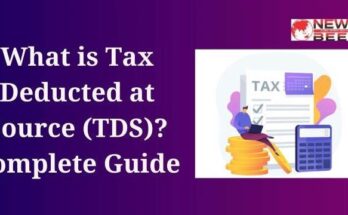Understanding the difference between an Initial Public Offering (IPO) and a Follow-On Public Offering (FPO) is crucial for anyone interested in the financial markets, particularly in how companies raise capital. Each has distinct characteristics, procedures, and implications for investors and the issuing companies. Here, we will explore these differences in detail. An IPO marks the initial public offering of a private company’s stock, while an FPO involves a public company issuing additional shares to raise more capital. Initial Public Offerings (IPOs) and Follow-on Public Offerings (FPOs) are two common methods for companies to raise capital through the stock market.
Initial Public Offering (IPO)
An IPO is the process through which a private company becomes a publicly traded company by offering its shares to the public for the first time. This is a significant milestone for private companies, often seen as a way to raise capital, enhance their prestige, and provide liquidity to early investors and founders.
1. Purpose and Objectives
The primary purpose of an IPO is to raise capital. This influx of funds is typically used for various purposes such as expanding business operations, paying off existing debt, and funding research and development. Moreover, transitioning from a private to a public company can provide enhanced visibility and credibility, which can be advantageous in business dealings.
2. Process
The process of an IPO starts with the company hiring investment banks to underwrite the issue. The underwriters and the company decide on the number of shares to be issued and the price range for the offering. This is followed by a rigorous regulatory process involving the submission of a registration statement to securities authorities (such as the SEC in the United States), detailing the company’s financials, business model, and risks. After approval, the company and underwriters conduct roadshows to gauge investor interest. The final offering price is set based on this interest, and then the shares are listed on a stock exchange.
3. Participants
In an IPO, the participants include the issuing company, underwriters (investment banks), institutional and retail investors, and regulatory bodies. Each plays a critical role in the success of the IPO.
4. Implications for Investors
IPOs can be attractive for investors as they sometimes offer the chance to buy shares at a relatively low price before potential appreciation in the open market. However, they also carry risks, as the lack of historical market data can make it challenging to value the company accurately.
Follow-On Public Offering (FPO)
An FPO occurs when a public company issues additional shares after completing an IPO. There are generally two types of FPOs: dilutive and non-dilutive. A dilutive FPO results in the creation of new shares, which dilutes existing shareholders’ equity. A non-dilutive FPO, often called a secondary offering, involves existing shareholders selling their shares, with no new shares being created.
1. Purpose and Objectives
The reasons for an FPO can vary but typically include raising additional capital to fund new projects or reduce debt, adjusting capital structure, or allowing major shareholders to exit or reduce their holdings.
2. Process
Similar to an IPO, an FPO involves the company deciding on the number of shares to be offered and at what price, in consultation with underwriters. Since the company is already public, the regulatory requirements are less stringent than for an IPO. However, the company still needs to file a prospectus supplement with updated financial statements and details about the offering.
3. Participants
The key participants in an FPO are similar to those in an IPO, including the company, underwriters, and investors. Regulatory oversight remains a crucial element, although the process may be slightly streamlined.
4. Implications for Investors
FPOs tend to be less risky for investors compared to IPOs due to the availability of more historical financial data and market performance analysis. However, the potential for significant price appreciation might be less dramatic than in IPOs.
Key Differences Between IPO and FPO
When companies need to raise capital, they often turn to the public financial markets. Two common methods of doing this are through an Initial Public Offering (IPO) and a Follow-on Public Offering (FPO). Both IPOs and FPOs allow companies to raise equity capital, but they differ in their nature, purpose, and impact on investors. Here, we explore the key differences between IPOs and FPOs across various dimensions such as their definition, timing, reasons for issuance, pricing mechanisms, and their impact on existing shareholders.
Timing and Market Conditions
IPO: The timing of an IPO is crucial and depends significantly on market conditions. A bullish market sentiment is generally preferred for IPOs as it increases the chances of a successful offering at a higher valuation. Companies planning an IPO work closely with financial advisors and underwriters to gauge the best timing based on economic indicators and sector-specific trends.
FPO: FPOs are less sensitive to market conditions compared to IPOs since the company is already public and investors have existing data to gauge the company’s performance. However, favorable market conditions can still help in obtaining better terms and pricing for the shares offered.
Reasons for Issuance
IPO:
- To raise capital to fund growth and expansion plans.
- To pay off existing debts.
- To provide an exit route for private investors or owners capitalizing on the investment.
- To increase public awareness of the company and enhance its corporate stature.
FPO:
- To raise additional capital for further growth and expansion after the IPO.
- To reduce the debt burden and improve the balance sheet.
- To meet regulatory requirements or shareholder agreements.
Pricing Mechanism
IPO: Pricing an IPO involves an extensive valuation process, often involving book building or a fixed price method. Book building is a process where demand from potential investors is gauged to arrive at an optimum price within a price band. The fixed price method involves setting the price at a specific value based on the company’s financials, expected growth, and market conditions.
FPO: In the case of an FPO, pricing can be slightly more straightforward if it’s a rights issue since the price is often set at a discount to the current market price to encourage existing shareholders to participate. For a public FPO, the pricing might follow similar methods to an IPO, but with a clearer insight into the company’s market performance.
Impact on Existing Shareholders
IPO: In an IPO, there are no existing public shareholders; however, private shareholders may see their shareholding diluted but their shares gain liquidity and market valuation.
FPO: For existing shareholders, an FPO can mean different things depending on its type:
- In a rights issue, shareholders have the privilege to buy more shares at a lower price, potentially maintaining their proportionate ownership.
- In a non-rights FPO, shareholders might face dilution of their holdings if they choose not to buy additional shares.
You May Also Read:
What is Digital Marketing in Hindi
SEO Interview Questions and Answers
Market Impact
IPO: The market perceives an IPO as a significant event, often accompanied by considerable media attention and investor interest, which can lead to high volatility in the stock price initially.
FPO: FPOs generally attract less media buzz and market volatility, unless the size of the offering is significantly large or the company is notably influential in its market.
Comparison and Context
In comparison, while both IPOs and FPOs are methods for a company to raise public funds, an IPO is a company’s first introduction to public markets, involving more regulatory scrutiny and market uncertainty. An FPO is used by already public companies looking to raise additional funds or allow insiders to sell their shares. Each has its strategic uses depending on the company’s phase of growth, financial needs, and market conditions.
Understanding both IPOs and FPOs is essential for investors and companies navigating the complex landscape of public equity markets. Each offering type carries its strategic implications and must be planned carefully to align with long-term business goals and market environments.
FAQs:
Q: What does IPO stand for?
A: IPO stands for Initial Public Offering. It is the process by which a private company becomes a publicly traded company by offering its shares to the public for the first time.
Q: Why do companies do an IPO?
A: Companies pursue an IPO for several reasons, including raising capital to expand, paying off debts, or allowing company founders and early investors to realize some of their profits. It also increases the company’s exposure, prestige, and public image.
Q: Who can invest in an IPO?
A: Initially, IPO shares are often offered to institutional investors, but retail investors can also participate through brokers who have access to the IPO shares.
Q: What does FPO stand for?
A: FPO stands for Follow-on Public Offering. It refers to the issuance of shares to the public by a company. That is already publicly listed and has gone through an IPO previously.
Q: Why do companies do an FPO?
A: Companies conduct an FPO to raise additional equity capital in the public market to finance their expansion, reduce debt, or diversify their equity base.
Q: What are the types of FPOs?
A: There are two main types of FPOs: dilutive and non-dilutive. A dilutive FPO results in the creation of new shares, which dilutes the earnings per share among existing shareholders. A non-dilutive FPO involves selling shares held by existing shareholders without creating new shares.
Q: What is the main difference between an IPO and an FPO?
A: The main difference is that an IPO is the first sale of stock by a private company to the public. Whereas an FPO is an additional issuance of stock by an already public company.
Q: How do the processes of IPO and FPO differ?
A: The process for an IPO involves more stringent regulatory requirements and disclosures because it is the company’s first entry into public markets, involving a transition from private to public ownership. An FPO, being a subsequent offering, typically faces a slightly less rigorous process, though regulatory compliance and disclosures are still strict.
Q: How does pricing differ between IPO and FPO?
A: IPO pricing can be highly speculative and is often influenced by the market’s perception of the company’s potential. FPO pricing is generally more grounded, as it is based on the existing public market valuation of the company.




